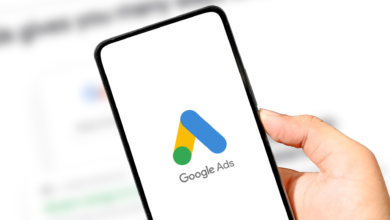Google Ads Editor 2.11: Campaign Negatives & Smarter Automation

▼ Summary
– Google Ads Editor 2025 release (v2.11) introduces smarter automation, better visibility, and tighter controls for large-scale account management.
– Performance Max campaigns now support campaign-level negative keywords and search term reporting for improved control and transparency.
– New automation features include scheduled link checks, AI-driven Smart Bidding Exploration, and automatic video generation from existing assets.
– Account-level placement/IP exclusions and editable lead forms streamline setup and enhance brand safety across campaigns.
– The update phases out legacy ad types and manual CPV bidding while adding enhanced CSV/download capabilities and granular tracking controls.
The latest release of Google Ads Editor, version 2.11, delivers a suite of powerful new features designed to give advertisers greater control and deeper insights into their campaign performance. This significant update focuses heavily on enhancing automation capabilities while providing more transparency, especially for users managing extensive advertising accounts across various campaign types.
A standout addition is the ability to apply campaign-level negative keywords directly within Performance Max campaigns. This long-anticipated functionality allows marketers to prevent their ads from showing for irrelevant search queries, reducing wasted ad spend and bringing Performance Max closer to the precise control available in traditional Search and Shopping campaigns.
Transparency receives a major boost with the introduction of a search term report specifically for Performance Max. Advertisers can now see the exact queries that trigger their PMax ads, offering valuable insight into what drives performance and what terms should be excluded.
To streamline account maintenance, a new scheduled link check feature automatically scans for and flags broken URLs on a regular basis. This automation saves considerable manual effort and helps protect conversion paths from being disrupted by dead links.
For broader account management, advertisers can now implement account-level placement and IP exclusions. Applying these brand safety settings globally, rather than campaign by campaign, ensures faster setup and more consistent protection across the entire account.
A new opt-in tool called Smart Bidding Exploration uses Google’s AI to experiment with high-performing search queries. By testing flexible ROAS targets, it aims to uncover incremental conversions from new search categories without requiring constant manual adjustments from the advertiser.
The process of working with lead forms has been simplified. Users can now edit existing lead form assets directly within the editor, eliminating the need to rebuild them from the ground up and significantly reducing setup time.
For video advertising, the platform can now automatically generate on-brand video creatives by utilizing a brand’s existing assets and style guidelines. This feature, which is enabled by default, lowers the production barrier for advertisers looking to launch campaigns on YouTube.
Campaign creation is also getting smarter. A new guided, AI-assisted setup process for Search campaigns helps advertisers build optimized campaigns through a clear, step-by-step construction flow.
Measurement precision is improved with more granular tracking control. Individual asset groups can now support their own tracking URL templates, suffixes, and custom parameters.
Additional enhancements include a more efficient interface for CSV operations and selective campaign syncing, which is particularly beneficial for managing large accounts. The update also brings expanded ad preview support for Demand Gen and responsive video ads, new Agency/Provider user lists for third-party audience targeting, and an expansion of high lifetime value (LTV) targeting for Search campaigns. Updated “TrueView” metric names and prompts to link Merchant Center feeds for Demand Gen setup are also included.
It is important to note that this release phases out some legacy features. Older App install ad types and certain Display ad formats are being deprecated, though existing ads of these types will remain editable for status and label management. Manual CPV bidding has been officially retired in favor of Video View Campaigns that use Target CPV, supported by a built-in upgrade tool for a smooth transition.
Ultimately, Google Ads Editor 2.11 empowers advertisers with a significant boost in efficiency and control. The introduction of new automation, enhanced transparency tools, and improved management capabilities, especially the much-requested campaign-level negatives for Performance Max, provides a stronger foundation for optimizing ad spend and improving overall return on investment.
(Source: Search Engine Land)





